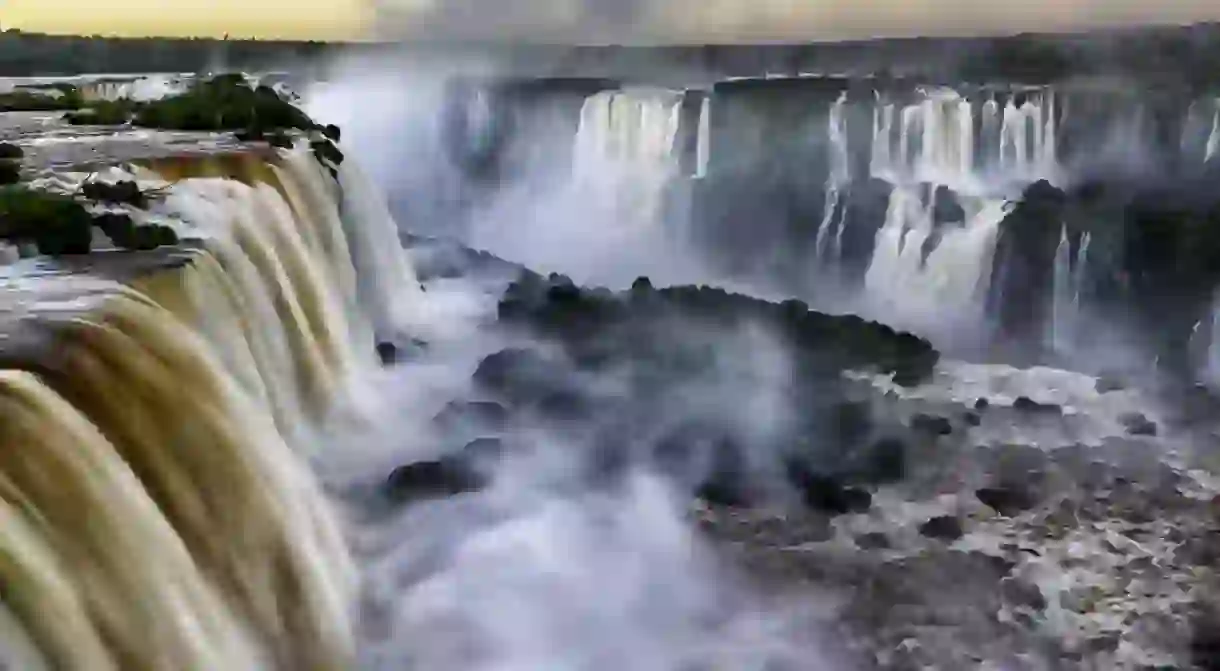A Guide to Discovering Argentina's Iguazu Falls

South America has a waterfall that’s a million times more impressive than Niagara but which many people have never heard of. It’s called Iguazu, a Guarani word that means big water. This is the largest waterfall in the world, and a UNESCO World Natural Heritage Site. If you weren’t sure if Iguazu should be on your Argentina travel itinerary, hesitate no longer, you won’t want to miss it.
You’ll never forget seeing the Falls up close. You can fly directly to Iguazu from Buenos Aires or take a bus. Here’s what you need to know before you go:
Created by a volcanic explosion, the waterfall is composed of over 250 smaller falls and is so large it spans two countries, Argentina and Brazil, pouring over a cliff in a huge free-fall the height of a 24-story building.

You don’t need to book a tour
Of course, you can take a tour if you want – there will be numerous operators vying for your favor when you arrive – but it isn’t strictly necessary. Buses to the falls are readily available, and paths are clearly marked. Once at the falls, both the Argentine and Brazilian sides offer boat trips, neither of which you need to book in advance. Do take an extra dry change of clothing, however – you’re going to get wet, and most of the boats have lockers on board. It’s also a good idea to get a waterproof case for your phone before you go. Bear in mind that summer in the northern hemisphere is winter down south, so bring warm clothes if you’re coming during the north’s summer months.
Don’t miss the Brazilian side
Once in Iguazu, you’ll have a choice. You can access two-thirds of the falls from the Argentinian side and call it good, or you can cross over into Brazil for the rest. (If you’re visiting from the United States, you will need a Brazilian visa to enter.) Couple reasons it’s worth going to the Brazilian side – one, Brazil allows you to get closer to the fall’s most famous section, the Garganta de Diablo, or Devil’s throat, a huge confluence of three massive falls; two, most boat trips on the Argentine side have an age limit (12 and over), whereas the Brazilian boats generally do not; and three, the Brazilian side will give you greater panoramic views of the whole thing. Booking with a driver from the Argentine side will help keep the border-crossing bureaucracy to a minimum.

You only need a few days
Aside from the waterfall, there’s not a whole lot happening in Iguazu. The town’s pretty quiet. The food scene is unimpressive. You may end up just hanging out in your hotel. If you want to extend the trip a little bit, you can head over to the Wanda Mines, a former Polish colony and home to a family-run amethyst mine. You’re best off booking a tour since the mines are a few hours’ drive from Iguazu; it makes for a nice little day outing once you’ve done the falls. Another option is the Parque de Aves, a privately-held bird park near the falls on the Brazilian side. Visitor information is available on their website.

And the best time to go is…
During the full moon in the spring or fall. When the moon is full, you can book a night walk to La Garganta del Diablo – ask about full moon tours at your hotel or book with the Argentine Exception. The moon illuminating the vast falls is truly a sight to behold. It may even have you believing the ancient legend about the falls, in which a god fell in love with a beautiful young girl named Naipí. Completely enamored, the god visited her parents in the form of a boy to ask her hand in marriage, and they accepted his offer. But turns out Naipí was already in love with someone else – a mortal by the name of Tarobá. One the god found out, he was enraged. When the two lovers tried to escape him by boat on the Paraná River, he chopped the river in half, creating the falls. How’s that for dramatic? Once you see the falls, you’ll find it fitting – they’re pretty dramatic themselves.













